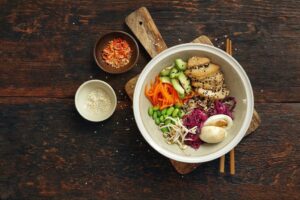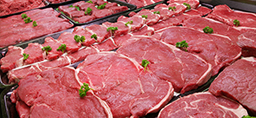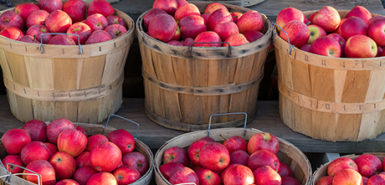
Some foods are well known for being great protein sources: eggs, chicken, beef, fish, peanut butter, Greek yogurt and even almonds.
But there are many lesser-known protein-packing foods to consider, like lentils, quinoa, peas, spinach, black beans, chickpeas and edamame.
There’s a lot to learn about powering up with protein, which is a nutrient we need every day and one of the main building blocks of a healthy diet.
Corewell Health dietitian Kristi Veltkamp offers protein tips–including several new, healthier ways we might consider working it into our diet.
How much protein do I need every day?
Well, it depends–on your size, gender, age, activity level and more.
That said, the recommended daily allowance of protein for a sedentary adult is 0.8 grams of protein per kilogram of body weight, or 0.36 grams per pound. So, to calculate your daily protein intake, multiply your weight in pounds by 0.36.
That means that the average sedentary man should eat about 56 grams of protein per day, and the average woman should eat about 46 grams.
People over the age of 60, highly active people, and those who are trying to build muscle mass, might need more, Veltkamp said.
When should I consume most of my protein?
Some people like to start the day with a protein-packed breakfast. Meanwhile, many Americans consume most of their protein at dinner.
Ideally, spread it out as evenly as possible, Veltkamp said.
“Your metabolism is working all day, so we need to give it that supply from protein. If you have little chunks of protein throughout the day, your body can be building and repairing all day.”
Balancing protein with carbohydrates throughout the day can also help you feel satisfied longer and helps balance your blood sugar so you are not getting spikes, Veltkamp said.
Some ways to do that with snacks: apples with peanut butter, a trail mix of your favorite nuts or seeds with dried fruit or dark chocolate chips, carrots with hummus, or Greek yogurt with berries.
Can I get too much protein?
That’s complicated. Veltkamp said that most people easily get the recommended amount of protein in a given day.
Consider this: the recommended portion size of meat as part of a healthy meal is 3 to 5 ounces–about the size and thickness of the palm of your hand or a deck of cards.
And that alone is around 25 grams of protein–halfway to the average recommended daily amount.
“We typically get that very easily and can exceed that,” Veltkamp said.
The problem comes not necessarily in too much protein, but in where that protein is coming from, she said.
“Too much protein tends to be animal protein,” she said. “It’s hard to overeat when we’re eating plant-based protein.”
And too much animal protein can lead to higher amounts of cholesterol, saturated fat and calories, which leads to a higher risk of heart disease, colon cancer, stroke and diabetes, as well as other risks.
Also, excess protein is stored as fat and can lead to weight gain or prevent weight loss.
Meanwhile, eating more plant-based foods offers benefits including maintaining a healthy weight, improved gut health, boosted immune system, reduced inflammation, more vitamin and mineral content, no cholesterol, and more fiber.
The biggest thing Veltkamp said she talks about with many people is eating more plants.
“Make animal proteins a side item on your plate,” Veltkamp said. “Three ounces is plenty for a serving. And choose a lean option such a poultry or seafood. Then load up more on your plant intake because that is where most of your health benefits are going to come from.”
A rule of thumb to make that easy to remember: divide your plate into one-quarter lean and healthy protein such as chicken breast, one-quarter starch or whole grain such as brown rice or baked potato, and the remaining half fill with vegetables.
What are some non-meat protein sources?
The list is long, Veltkamp said.
Consider these, listed with the amount of protein per 1 cup serving:
- Chickpeas or hummus, 20 grams
- Red lentils, 18 grams
- Black beans, 18 grams
- Shelled edamame, 18 grams
- Quinoa, 16 grams
- Brown rice, 10 grams
- Green peas, 9 grams
- Spinach, 4 grams
If you’re feeling more adventurous, you can turn to tofu, which offers 9 grams of protein per three ounce serving, or tempeh, which has 16 grams per three ounce serving.
Another tip from Veltkamp: total up all the protein in your meal before you add meat, and you might be surprised how much is there already.
Veltkamp pointed out that some countries’ diets–including those in places where people traditionally live the longest–are based on plant-based proteins.
And another bonus for going plant-based: animal protein such as meat and eggs are expensive right now.
“A can of beans is much cheaper,” she said.
It might be time to start thinking about new sources of protein and find a balance that works for you.
 /a>
/a>
 /a>
/a>
 /a>
/a>
Thank you for this helpful recap of protein needs and sources. I am curious about what source you are using for your average weight of a sedentary woman. According to your calculations, it is much lower than I have seen published.
Your dedication to sharing health information is making a positive impact. I’m grateful for the insights you provide.